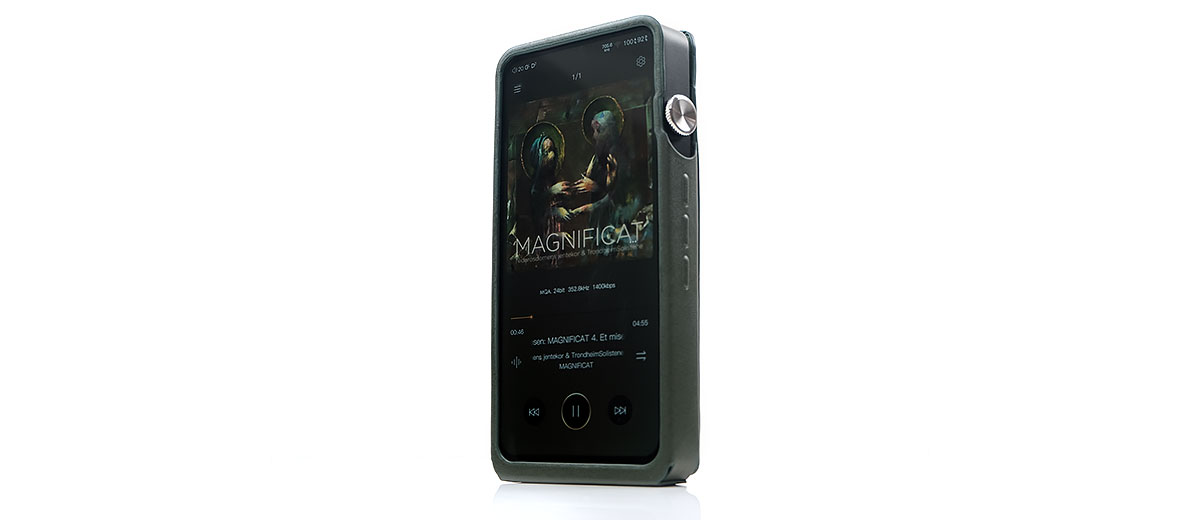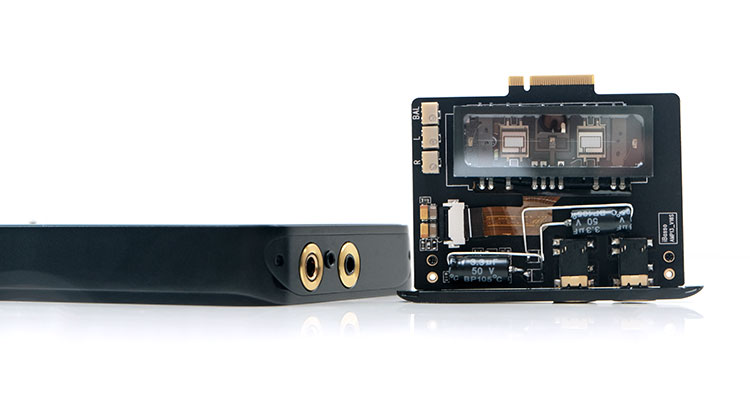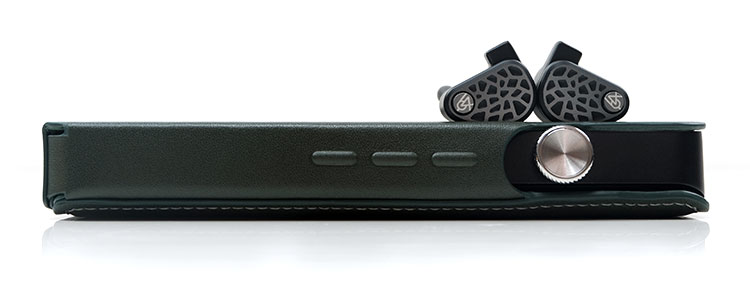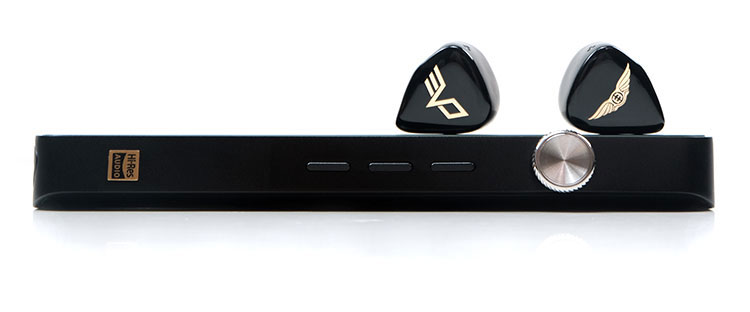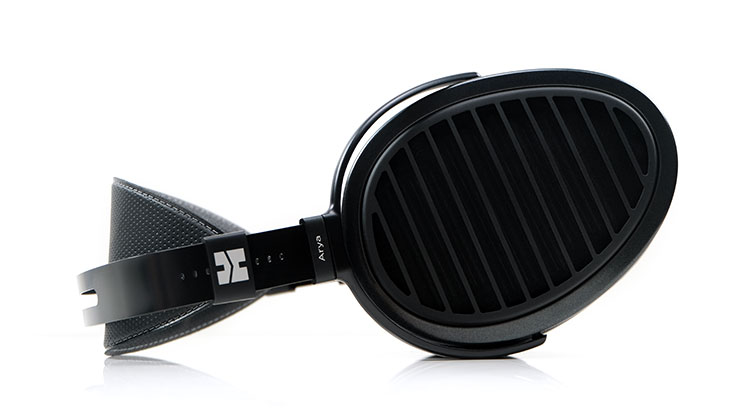Sound Impressions
Amp 11 MK2s Summary
A completely different DAC but an evolution of the previous AMP11 MK1 and MK11 brings about what I would consider being a halfway house between the stock clean and neutral sound of previous iBasso players such as the DX240 and the outlier relaxed and smooth performance of the original stock DX300 when it first launched.
With our tested headgear, the DX320 delivers robust full-bodied performances with an excellent level of dynamic range as well as a very black background, even with very sensitive IEMs.
However, this is not a sound signature imbued with a huge amount of warmth. There is some increased contrast in the AMP11 MK2s tuning, particularly in the lower treble which has a level of energy that can grab your attention on headphones such as the Meze Audio Liric.
That being said, the higher frequency tonal signature never felt brittle or glassy. The DX320 always seems to tease out a superlative level of impact and dynamics on the low-end to counter the cleaner upper-mids and highs.
Note body now comes with improved definition making the original AMP card comparatively soft and more diffuse in its imaging. No more so than on the low-end. Gone is the relative bloom and warmth and instead, you get a more neutral tone but a more articulate and punchier response.
Dynamic driver IEMs such as the Empire Ears EVO and Odin feel that bit tighter, more attack-orientated with a slightly shorter level of decay. Short bass synth bursts sound weighted but clear and precise coming in and out very cleanly making them easy to pinpoint and enjoy.
Amp 11 MK2 S Timbre
The coloration pulls away from the gliding analog warmth of the original DX300/AMP11 MK1 to deliver a slightly neutral to natural tone combined with a more robust and dynamic tuning.
That results in notes retaining plenty of body, but a more accurate harmonic balance compared to the original. The level of note decay also shortens up a little bit more though not quite as abrupt as previous Sabre offerings.
There is definitely some additional lower treble presence in the DX320 stock tuning that adds a bit more bite to the likes of percussion timbre and some higher pitching vocals. It doesn’t translate to a peaky sound but is not quite as liquid or relaxed sounding as the original AMP11 MK1 card.
On the flip side, the DX320 mids do have a more neutral and clean tone to instrumental coloration but its like a halfway house between reference Sabre and analog Cirrus Logic if that makes sense. It sounds much clearer and better defined than before but still retains a gritty fulsome texture to prevent it from giving any sort of overt digital coloration.
The fundamental on the AMPMK11s and stock DX320 is superb. Do not get me wrong, it is not overly dominant but rather the depth and punch bring a lot more interesting textural detail to lower register instruments compared to the original.
The AMP11 MK1 is warmer and softer on the leading edges. Comparatively speaking it might seem fuller on the sub-bass but it’s a pillowy type of bass with less punch and not as tight and well separated as the DX320 equivalent.
Amp 11 MK2 S Staging & Dynamics
The dynamics are just really good on the AMP11 MK2s. This is an excellent card for deep-sounding dynamic driver IEMs but even BA IEMs such as the VE Phonix sound punchy and vibrant on the lows.
Definitely, a mid-bass hump teasing out a punchier low-end but more than that, a more spacious low-end with excellent layering. That means every note has its own clear space around it allowing you to easily pick up the textured detail compared to the original card.
The AMP11 MK1’s bloom, softer leading edges, and a higher level of decay mean the low-end sounds more voluptuous but also a little more congested sounding and not quite as dynamic. You could argue the pace of the low-end on the original card is also more languid sounding as a result.
The DX320/AMP11 MK2s midrange is more complex and holographic sounding compared to the original. I am not quite convinced vocals are as far forward, perhaps they image close to the original but the additional upper mids and treble energy deflect slightly from an entirely vocal-centric performance.
Still, the space and depth in the mids allow vocals to grab their own space quite easily. The uplift in the odd harmonic timbral influence also gives a lot of midrange spatial notes a little bit more shine which, in turn, aids the perception of a wider or deeper soundstage.
The high-frequency extension is an interesting one. The lower treble energy is stronger, there is a little more brightness so it’s not as relaxed on the highs as the original.
Still, the upper treble is a little more attenuated for me with our tested IEMs but more subtle than overt. You can tease out a bit more sparkle with 1-2dB peaking PMEQ adjustment though if that is to your preference.
AMP13 Summary
You get two sound signatures with AMP13. The first is a beautiful pure tube type tuning from the low noise output or furthest jack to the left complete with a sweet euphonic overtone, excellent depth, and an airy treble with plenty of pristine pure sparkle.
The second is the maximized output and here is where you can pick up that 3rd stage amplification or the opamp which is used to increase the output power of the right-sided jack. The overall tone to me is still quite natural but not quite as tube-like in its qualities.
You can pick up a little more on some of that solid-state influence with an energetic and punchier low-end and some more filling in on the lower mids giving it a physical attribute yet still a fairly smooth sound.
The maximized output doesn’t quite have the same sparkle and airy upper treble tuning of the pure tube output so staging wise it is a little more centered with both bass and mids capturing your attention a bit more. Of the two, it’s a bit more forward sounding in these frequency ranges.
The pure tube output has the more classical tube staging meaning you are sitting a few rows further back, hearing more depth and expansiveness in general. It is more of a delicate ethereal sweet tone as you might expect from a typical SETA tube output so it doesn’t sound forced even though it has some decent sub-bass rumble.
Compared to AMP11 MK2s neither output will sound that neutral or as full-bodied in their delivery. Both offer more euphony and a more forgiving upper mids and treble tuning making this a very easy AMP card to pair with mid-forward IEMs but less aggressive for dynamic drivers in terms of slam.
Synergy
Noise Floor
As few things to note here with those planning on pairing the stock DX320 with sensitive IEMs. First, as with the DX300, the AMP11 MK2s noise floor is very low indeed, even when using the stronger balanced PO output. It is still one of the quietest on the market and certainly more serene than alternative flagships such as the HiBy R8.
You should have no issues with the likes of the Campfire Audio Andromeda 2020 or some of the more sensitive models from Vision Ears such as the VE8. Neither of which produced any noticeable background hiss when used at very low volumes.
Channel balancing is also very good but iBasso seems to have set up the volume control a little differently from the DX300. First, there is a reduced volume step range of 0-63 rather than 0-100 and second, there seems to be an immediate injection of volume on step 1 than a gradual increase.
Thus, the potential for channel imbalance is rendered moot but you might find less range for micro-tweaking volume levels than before.
AMP 13 Noise Floor
I was also quite surprised with the AMP13 noise performance and nothing like the older AMP9 version which had a lot of background hiss with sensitive gear. Not so this time, with a very similar mute on zero volume and then an immediate audible signal on step 1 with no channel imbalance using the same tested IEMs.
Granted, you will get some initial tube microphonics when connecting to either jack since the NuTube is quite close to the analog ports. However, that should pass after a few seconds or when you start up some music.
The other observation with noise on the AMP13 is EMI with the WiFi, less so with BT that I could pick up with my test devices. It was not a massive level of interference and lower in the low noise output compared to the maximized output. it comes across as a tiny bit of rustle and scratching noise during playback. It goes away completely when WiFi is turned off.
AMP11 MK2s IEM Pairings
I definitely enjoyed the relative physicality from the stock DX320 AMP11 MK2s tuning with a robust response from dynamic driver pairings such as the Empire Ears Legend EVO and Odin.
It is not that the new ROHM chip and AMP will inject huge dollops of warmth on the low-end but rather its dynamic range and attack go up a notch over the mellower-sounding AMP11 MK1.
The focus seems to shift towards the leading edge with a slightly drier decay allowing notes to come in and out in a very dynamic and explosive manner yet still leave a ton of space so they do not drown each other out or overlap and smear the bass response.
The stock tuning is not just for big dynamic driver IEMs though. That neutral to natural overtone combined with the excellent dynamic range teased a very vivid and punchy performance from normally smooth sailing flagship BA driver Phonix from VE.
I will say the stock DX320 is a little less forgiving on the upper mids and lower treble for the likes of the Odin compared to the smoother tuning of the AMP11 MK1.
Again, the body and definition are much better and percussion is more vivid and attention-seeking. However, there is a little bit of dissonance coming into some cymbal timbre that a bit of PMEQ or a change of tips from Final E to maybe using SpinFits could remedy if not to your taste.
I wouldn’t confuse this with ‘Sabre glare’ or a glassy overtone, rather the coloration has a little more contrast and is truer to the natural forward upper mids imaging of the Odin for example.
AMP11 MK2s PMEQ
One little interesting tweak, an odd one at that, was throwing in a bit of a peak via PMEQ on the upper treble, (original firmware), at around 2dB gain between 9-10k with a narrow Q factor of 0.7. Sounds unusual and yes it produces a slightly brighter and possibly sweeter tuning but it seems to also tease out a bit more brilliance and female vocal shine along with it.
It’s not for every track or every IEM. It will sound too much for bright mixes and headphones such as the Meze Audio Liric which I tend to go in the opposite direction for PMEQ. I would call this a mood PMEQ adjustment generally for warm, overly smooth, or dark monitors where I wanted some additional airy sparkle.
I tended to work that into something like the very smooth-sounding JH Sharona to give it a bit of a lift with the stock DX320. However, even peppy IEMs like the Andromeda 2020 seem to have a bit more of an evenly balanced treble as a result. Fans of the “Asian Tuning” will understand what I mean by that.
AMP11 MK2s Headphone Pairings
Of the two amp cards we tested, the AMP11 MK2s is the better match for more demanding headphones with its 1W capability on a 32Ω load compared to the AMP13’s max of 240mW on the same load.
I tried 4 different pairings via the DX320 balanced PO which is where it will perform at its best. These included the HIFIMAN Arya Stealth, Rosson Audio Design RAD-0, the Meze Audio Empyrean, and the Liric.
None of these are what I would call overly demanding planar headphones and should perform well on those peak loads from the AMP11 MK2s.
Preferences
Out of the 4, I had two distinct preferences with the RAD-0 and the Empyrean getting my vote over the Liric and the Arya Stealth. A few reasons for that but the primary one was the slight timbral hotness from both the Liric and the Arya on the upper mids and lower treble when paired with the DX320.
The Liric timbral clash was more prominent and to be honest that is in the nature of the Liric but the DX320 does have that slight lift in the lower treble that drew more attention to it. The Arya was smoother but the timbral coloration did not quite seem as natural to my ears for this same region.
The RAD-0 and the Empyrean were excellent pairings but they do have a smoother upper mids tuning and in the case of the Empyrean a little bit darker sounding also. The RAD-0 bass performance was physical, aggressive, and punchy. This was perhaps my favorite of the two for low-end power and PRaT with the AMP11 MK2s.
A very impressive pairing aided by a treble that retained a fairly smooth and clear tuning and one that seems largely unaffected by the slight lower treble emphasis from the AMP11 MK2s tuning.
The Empyrean low-end was not quite as dense and weighty as some stronger powered desktop amps can dig out but it remained tight and punchy with some very clear and robust vocal performances.
Importantly, it didn’t sound congested or lacking in dynamic range with that slight lower treble presence adding some welcome contrast to the Empyrean’s timbre.
AMP13 Pairings
Whilst AMP11 MK2s is more ideal for maximum dynamic range with demanding headphones I actually found AMP13 out of the maximized output to be a better match timbrally for the likes of the HIFIMAN Arya Stealth Edition which is one of the easier units out there to drive.
The impact is a shade softer but the mids and lower treble are very smooth, especially for vocal performances. You get a dose of euphony, a slightly softer leading edge, and decent dynamics on the low-end making this an engaging yet more forgiving and warmer pairing.
The low noise output from the Arya is even sweeter in its coloration with some nice sub-bass presence but the treble gets perhaps a little too much lift sounding a little brighter and not as physical as the maximized hybrid sound. Still, both outputs gel better with the Arya than AMP11 MK2s for my preferences.
IEMs
That pattern continues once you go down to IEMs which is where AMP13 is a killer choice. Both outputs have their own specific characteristics that I felt better matched some IEMs over others.
For example, VE Phonix sounded better for me with the maximized output. You give up a little bit of upper-frequency sparkle but in return, you get a bit more punch and aggression which is how I like to listen to the Phonix.
The Odin also seemed better suited to the same output with more solidity in the upper bass and lower mids compared to the lighter touch of the low noise output.
On the flip side, Campfire’s Andromeda 2020 sounded very sweet and inviting with the pure tube sound of the low noise output.
The 2020 version is not quite as extended on the highs as the original so the little treble lift this output delivers is spot on for my tastes. At the same time, the increased sub-bass presence from the AMP13 pure tube output also adds a bit more depth and power to the Andromeda 2020 sound signature.
Click on page 2 below for I/O, controls, and software performance
Click on page 3 for software changes and wireless performance

